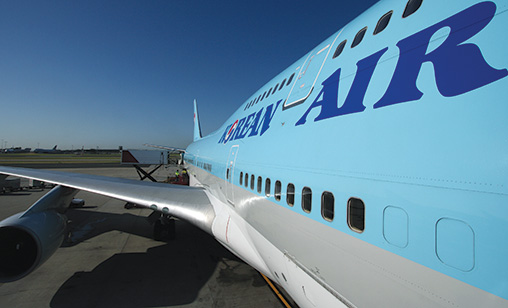Orient Aviation 2020 Year in Review
December 1st 2020
NOVEMBER
In normal times, a proposed union between the number one and number two airlines in a country would be given short shrift by governments and regulators. Read More » However, 2020 has proved anything but normal.
So it was that Korean Air’s (KAL) parent, Hanjin Kal, announced it intended to acquire Asiana Airlines in a 1.8 trillion won (US$1.6 billion) transaction backed by the state-run Korea Development Bank and described as unavoidable by South Korea’s deputy minister for civil aviation, Kim Sang-do. The combined KAL and Asiana operation would be among the top 10 carriers in the world and also the largest operator in the Asia-Pacific.
 |
International Air Transport Association (IATA) regional vice president for Asia-Pacific, Conrad Clifford, told reporters this month he expected governments to take a less restrictive approach to consolidation given changed market conditions and the very poor financial condition of airlines.
IATA’s latest forecast, published this month, showed Asia-Pacific carriers were on track to lose US$31.7 billion in calendar 2020 compared with its June estimate of a US$29 billion net loss.
Conditions were expected to improve in 2021, but the region’s airlines are still forecast to be in the red for the 12 months with net losses of US$7.5 billion, or US$6.30 per passenger.
SIA announced it would retire 26 aircraft, including seven A380s, as part of its repositioning post COVID-19. It reported a net loss of S$3.5 billion (US$2.6 billion) for the six months to September 30, with revenue collapsing by 80%, to S$1.6 billion.
There was an indication of pent-up passenger demand this month after Hong Kong and Singapore tried to establish an air travel bubble (ATB). Would-be travellers snapped up tickets at a furious pace in the hours after the scheme was announced.
Alas, all that excitement turned out to be premature, with the two countries deciding to suspend the ATB the day before the November 22 launch due to a sudden jump in coronavirus cases in Hong Kong.
Qantas group CEO, Alan Joyce, this month floated the idea of a “no jab, no fly” policy for those flying internationally with the airline when ex-Australia flights resumed. The airline group later said there would be alternatives for those unable to be vaccinated due to pre-existing medical conditions, such as heightened testing, mask wearing and/or quarantine.
Boeing’s latest forecast for China calculated the nation would need 8,600 new commercial aircraft to 2040, up 510 aircraft, or about 6%, from the 2019 report. COVID-19 had severely impacted every passenger market, but the manufacturer said China’s fundamental growth drivers remained resilient and robust.